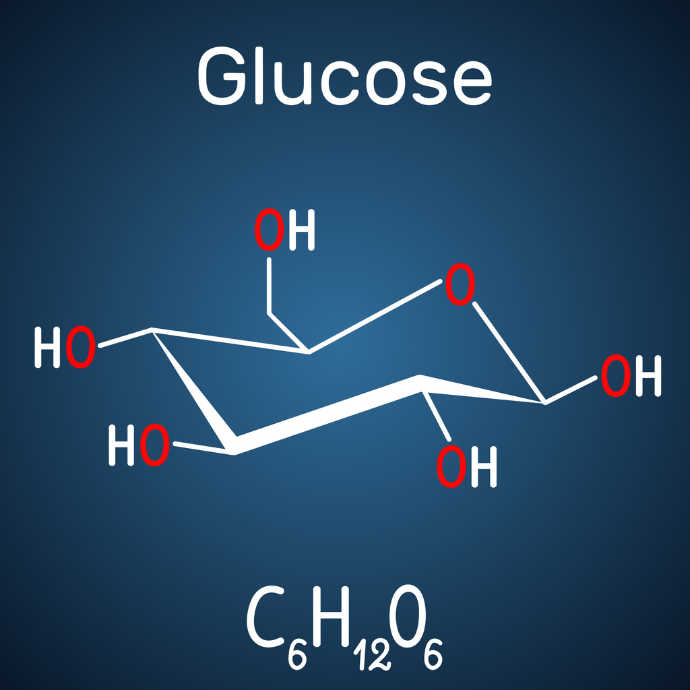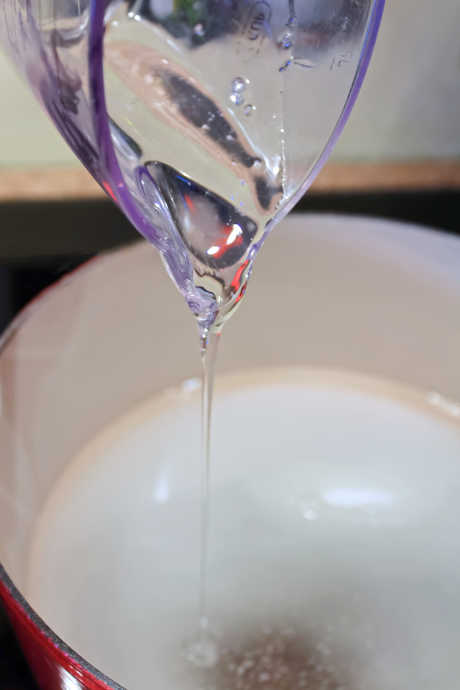Corn Syrup: An Essential Ingredient
Posted by Julie on Apr 17th 2020
We hear a lot about how high fructose corn syrup (HFCS) may be unhealthy, but corn syrup is actually an essential ingredient in many recipes for candy and baked goods. Is there a difference between HFCS and corn syrup? What exactly is corn syrup, and why do recipes call for it? We’ll answer these questions and more, as we hope to put your mind at ease the next time you encounter corn syrup on a recipe ingredient list.
Types of Sugar Molecules
We promise not to get too scientific, but it helps to start with an understanding of sugar molecules. Food52 does a great job of breaking down the differences between sucrose, glucose, fructose, and maltose. We’ll summarize here, but check their site for more details.

Sucrose is granulated sugar -- what you probably have on your pantry shelf right now. Each sucrose molecule is composed of one glucose molecule and one fructose molecule. Glucose and fructose molecules are also found alone. Glucose is less sweet than sucrose, and fructose is sweeter than sucrose. Dextrose is another name for glucose, and maltose is composed of two glucose molecules. There are other forms of sugar molecules, but this is a good start.
Corn Syrup vs. HFCS
High fructose corn syrup is not the same as corn syrup. They are both processed using enzymes to create sweet syrup from corn starch, but HFCS is altered further. Corn syrup is glucose. In fact, you can buy glucose syrup too, which may be made from corn, wheat, or potatoes. In all cases, enzymes are added to starch, resulting in syrup.
In HFCS, additional enzymes are used to turn some of the glucose into fructose. The purpose of this processing is to make the syrup even sweeter. Recall that fructose is sweeter than sucrose (granulated sugar), which is sweeter than glucose. Converting glucose to fructose makes the resulting syrup much sweeter. That’s why HFCS is used in large-scale food and drink production: It’s a cheap way to sweeten products.
Check your corn syrup to confirm that HFCS is not among the ingredients. Karo, perhaps the most well-known brand of corn syrup, does not contain HFCS.
Why Use Corn Syrup
If corn syrup isn’t as sweet as granulated sugar, why do we use it in home cooking? King Arthur Flour explains that corn syrup is an invert sugar, which means it’s a liquid at room temperature. Honey and agave syrup are also invert sugars. Being liquid at room temperature, corn syrup does not recrystallize the way granulated sugar does after it has been heated on the stovetop or baked in the oven. It also prevents crystallization in frozen sweets.

What does this mean in terms of the results we see in the kitchen? Corn syrup makes candies like fudge and caramel soft and smooth. It also gives hard candies a smooth texture rather than a gritty one. Corn syrup is also used in pecan pie to ensure the filling remains smooth and sticky, even after baking. Because corn syrup prevents both sugar crystals and ice crystals from forming, it’s also helpful when making sorbet and ice cream. Finally, you can even add a teaspoon or so of corn syrup to baked goodies like cookies to take them from crisp to chewy.
Recipes Using Corn Syrup
We’ve written before about sorbet and fudge, and how corn syrup is an essential ingredient in these treats. Below, we’ll share a few more ideas to help illustrate the usefulness of corn syrup.
Dark Chocolate Pecan Pie
We mentioned pecan pie above, and it’s a great place to start. Keep this recipe from Sally’s Baking Addiction in mind for Thanksgiving this year, especially if you love dark chocolate. Using corn syrup in addition to half a cup of brown sugar keeps the filling sticky and smooth without it being overly sweet. The dark chocolate is rich, but not overly sweet either. Sally recommends dark brown sugar and dark corn syrup. We suggest getting two bottles of corn syrup, one light and one dark. Use the dark for pecan pie, fudge, and caramels. Use the light for recipes that are meant to be lighter in color, such as sorbet and the other two recipes below.

Seven Minute Frosting
This classic frosting is light and airy with a subtle sweetness. That's why it’s sometimes called Marshmallow Frosting. Use it for frosting cakes and cupcakes when you don’t want to add much sweetness, and you don’t want the flavor of the frosting to compete with the flavor of the cake. We like this recipe from King Arthur Flour, which calls for two teaspoons of corn syrup. If you have a hand mixer, you can beat this frosting right in the double boiler. One key point emphasized by every seven minute frosting recipe we viewed: Make this frosting right before you intend to use it, and serve it that same day. It isn’t nearly as delicious after sitting overnight.
Homemade Lollipops
One of our favorite food science resources, San Francisco’s Exploratorium website, offers a recipe for homemade lollipops along with scientific explanations for the various ingredients. As we’ve noted before, corn syrup is used in hard candy like lollipops to make the finished product clear and smooth. This recipe also calls for cream of tartar, which has the same effect on sugar -- it helps prevent crystallization. Your lollipops might look practically professional, thanks to these key ingredients.

